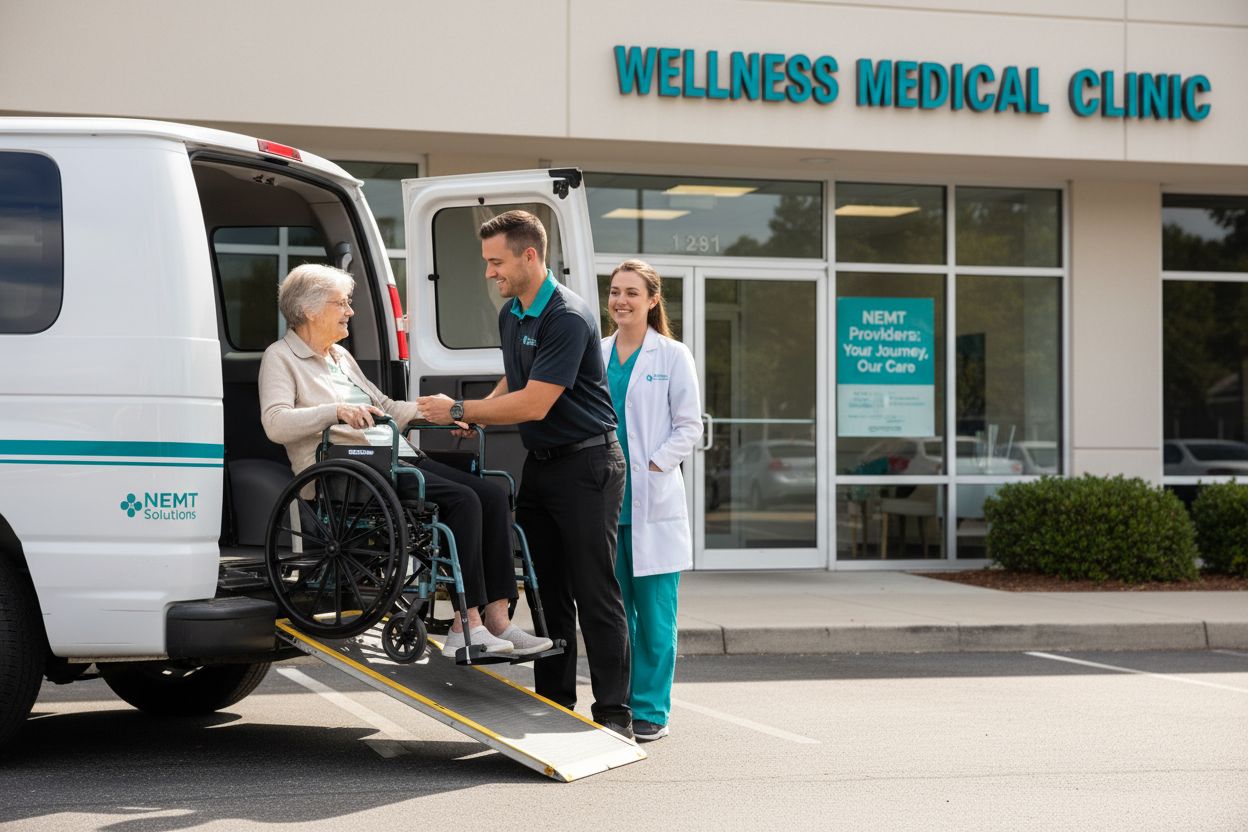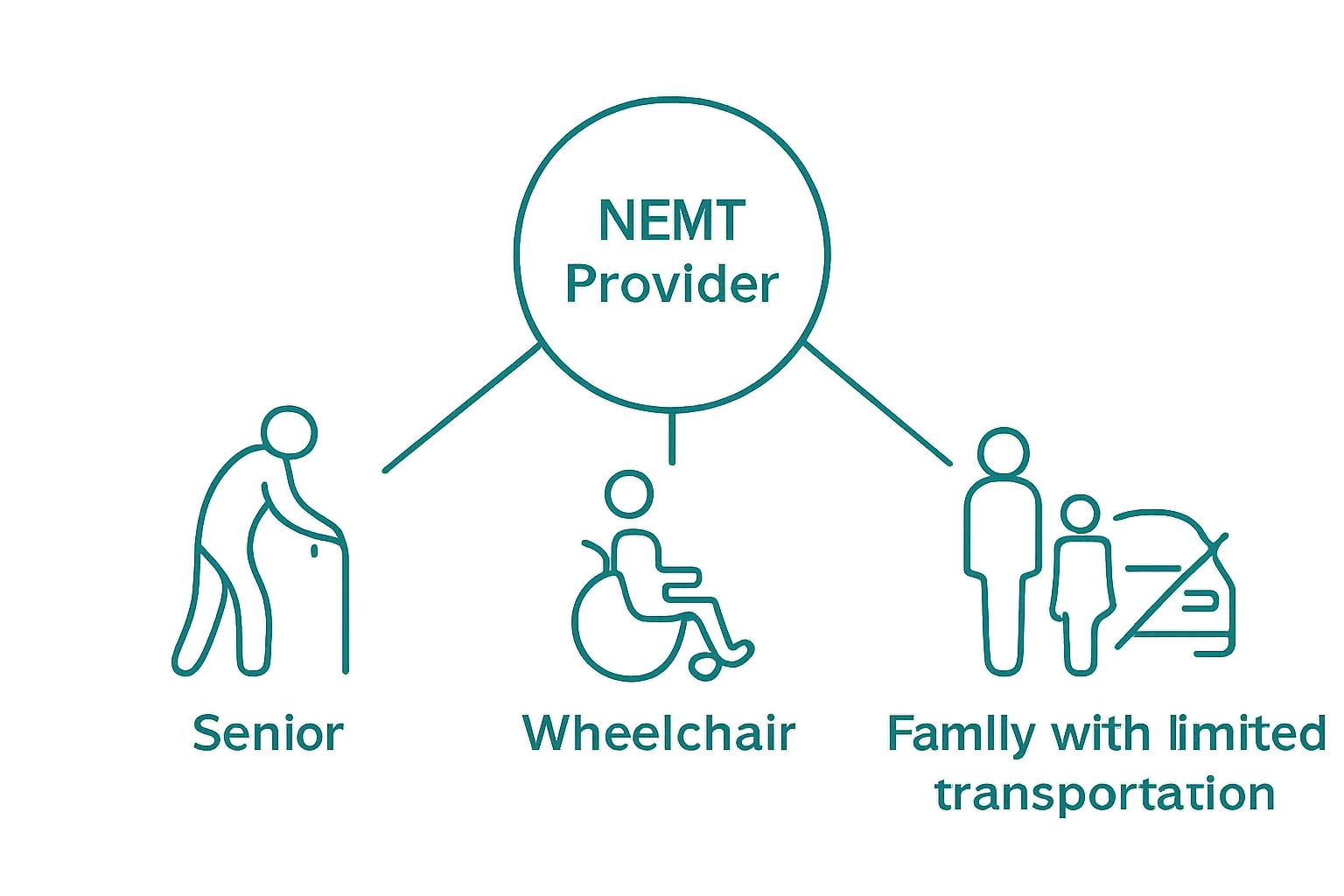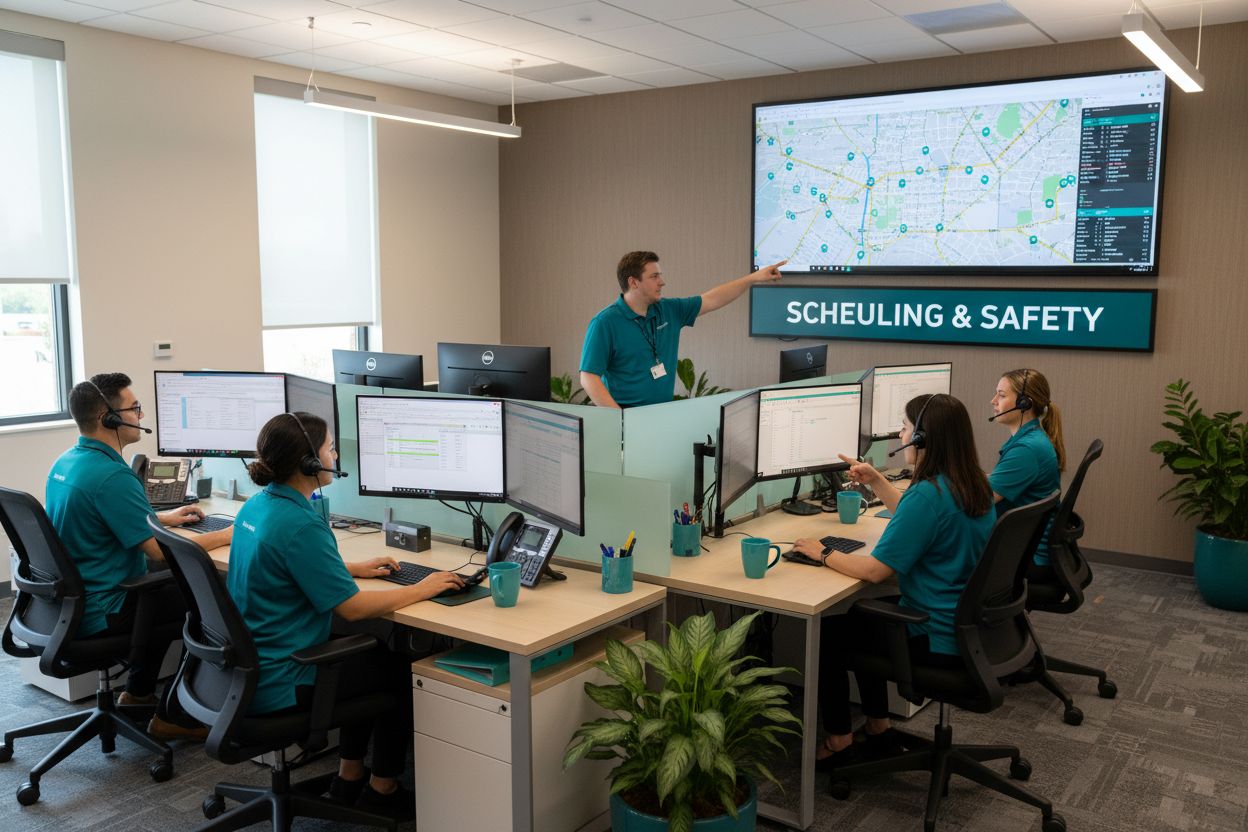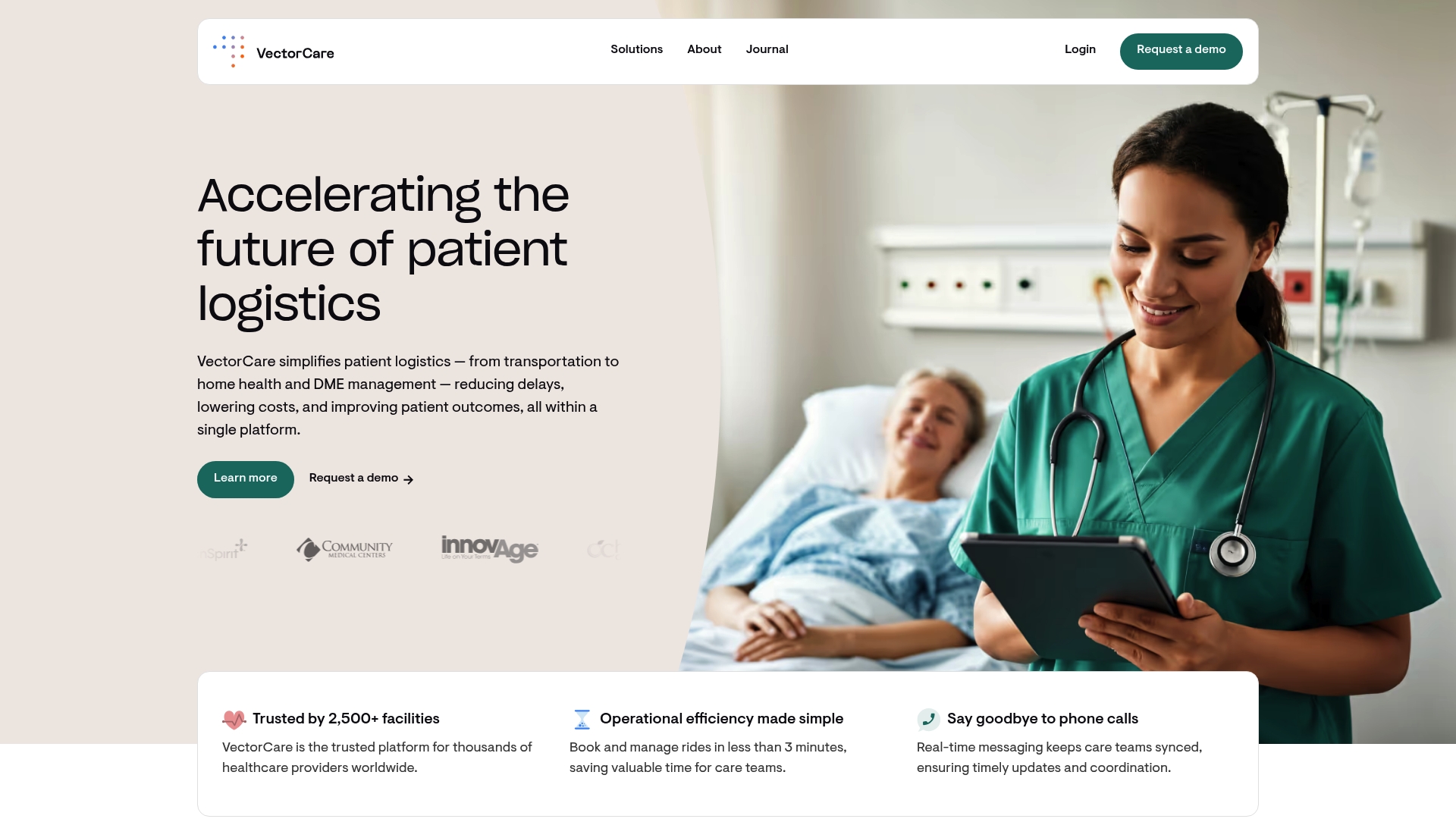Understanding NEMT Providers: Roles and Impacts

Millions of Americans face barriers just getting to their doctor’s appointments, and for many, missing care is not a choice. Here’s the shocker. On average, Medicaid covers over 59 million NEMT rides each year for patients who could not make it otherwise. Yet most people have never even heard of NEMT or realize how it quietly prevents major health crises and hospitalizations. The real story is not just about vehicles and drivers but about how these providers are holding the entire healthcare system together for some of its most vulnerable members.
Table of Contents
- What Are NEMT Providers And Their Purpose?
- Why NEMT Providers Matter In Healthcare Delivery
- How NEMT Providers Operate: The Transportation Framework
- Key Challenges Faced By NEMT Providers
- Future Trends For NEMT Providers In Healthcare
Quick Summary
| Takeaway | Explanation |
|---|---|
| NEMT providers ensure access to healthcare. | They connect patients unable to drive or use traditional transport with essential medical services, helping reduce barriers. |
| NEMT services minimize healthcare disparities. | By providing reliable transportation, NEMT helps patients engage in preventive care and manage chronic conditions effectively. |
| Technology enhances NEMT operations. | Advanced dispatch systems and predictive analytics improve logistical efficiency and patient experience, ensuring timely transportation. |
| NEMT decreases overall healthcare costs. | By preventing emergency visits and complications through consistent care, NEMT services lower overall healthcare expenditures significantly. |
| Patient-centered models are the future of NEMT. | Future NEMT providers will focus on personalized experiences and integrated health management, enhancing patient comfort and care quality. |
What are NEMT Providers and Their Purpose?
Non-Emergency Medical Transportation (NEMT) providers play a critical role in connecting patients with essential healthcare services, ensuring individuals who cannot drive or access traditional transportation methods receive timely medical care. These specialized transportation services bridge crucial gaps in healthcare accessibility, particularly for vulnerable populations.
Defining NEMT Providers
NEMT providers are organizations or services dedicated to transporting patients who require medical assistance but do not need emergency ambulance services. These providers typically serve individuals with specific transportation challenges, such as:

- Elderly patients
- Individuals with disabilities
- Patients requiring dialysis or recurring medical treatments
- People with chronic health conditions
- Low-income individuals without personal transportation
According to CMS (Centers for Medicare & Medicaid Services), NEMT services are a critical component of ensuring equitable healthcare access for Medicaid beneficiaries.
Core Functions and Responsibilities
NEMT providers manage complex logistics to guarantee safe, reliable transportation for patients. Their responsibilities extend far beyond simple point-to-point travel. Key functions include:
- Coordinating medical appointment scheduling
- Ensuring patient safety during transit
- Providing wheelchair accessible vehicles
- Accommodating specialized medical equipment
- Maintaining detailed transportation records
These providers must navigate intricate healthcare regulations while maintaining high standards of patient care.
Below is a table summarizing the core functions and key responsibilities of NEMT providers, making it easier to understand the range of services they offer and the impact on patient care.
| Core Function | Description |
|---|---|
| Appointment Coordination | Scheduling and organizing patient transportation for medical visits |
| Patient Safety During Transit | Ensuring the health and safety of patients throughout the ride |
| Wheelchair Accessible Vehicles | Providing vehicles equipped for patients with mobility challenges |
| Accommodation of Medical Equipment | Ensuring space and security for specialized medical equipment |
| Detailed Transportation Records | Maintaining accurate records for regulatory compliance and continuity |
| Navigation of Healthcare Regulations | Adhering to complex healthcare and transportation industry rules |
| High Standards of Patient Care | Focusing on comfort, timeliness, and overall patient satisfaction |
By offering specialized transportation solutions, NEMT providers help patients overcome mobility barriers, ultimately supporting more comprehensive and inclusive healthcare delivery. Read more about how NEMT enhances health access and its transformative impact on patient care.
Why NEMT Providers Matter in Healthcare Delivery
Non-Emergency Medical Transportation (NEMT) providers are not merely transportation services but critical healthcare infrastructure that addresses systemic challenges in patient access and care continuity. Their significance extends far beyond simple mobility solutions, fundamentally transforming how healthcare services are delivered to vulnerable populations.
Addressing Healthcare Accessibility Barriers
NEMT providers play a pivotal role in dismantling transportation barriers that prevent patients from receiving timely medical care. Medical isolation can significantly impact health outcomes, particularly for individuals with limited resources or mobility challenges. Research from the National Academies of Sciences demonstrates that transportation challenges directly correlate with:
- Reduced preventive care engagement
- Higher rates of missed medical appointments
- Increased healthcare disparities
- Delayed medical interventions
- Compromised chronic disease management
By providing reliable transportation, NEMT providers ensure that geographic and economic constraints do not become insurmountable obstacles to healthcare access.
Economic and Public Health Implications
The broader impact of NEMT services transcends individual patient experiences. These providers contribute to significant public health and economic benefits by:
- Reducing emergency room utilization for non-urgent conditions
- Preventing health complications through consistent medical care
- Supporting population health management strategies
- Minimizing hospitalization rates
- Decreasing overall healthcare system costs
Statistics indicate that effective NEMT services can reduce healthcare expenditures by preventing costly medical interventions that result from untreated conditions. Learn more about NEMT’s transformative potential and how advanced transportation solutions are reshaping healthcare delivery.
By bridging critical gaps in healthcare accessibility, NEMT providers demonstrate that transportation is not just a logistical service but an essential component of comprehensive patient care.
How NEMT Providers Operate: The Transportation Framework
Non-Emergency Medical Transportation (NEMT) providers operate through a sophisticated and carefully orchestrated system designed to ensure safe, efficient, and reliable patient transportation. Their operational framework involves complex logistics, technological integration, and stringent compliance protocols.
Dispatch and Scheduling Mechanisms
The core of NEMT operations centers on advanced dispatch and scheduling systems that match patient needs with appropriate transportation resources. Intelligent routing algorithms enable providers to optimize vehicle assignments, considering factors like patient mobility requirements, medical equipment needs, and geographic constraints.
Key components of their scheduling process include:
- Real-time vehicle tracking
- Patient medical requirement assessment
- Dynamic route optimization
- Multimodal transportation coordination
- Automated confirmation and communication systems
Research from the Transportation Research Board highlights how sophisticated dispatch technologies significantly improve transportation efficiency and patient experience.
Compliance and Safety Protocols
NEMT providers must navigate a complex regulatory landscape, ensuring strict adherence to healthcare transportation standards. Safety and compliance are paramount, requiring comprehensive driver training, vehicle maintenance, and patient care protocols.
Critical compliance elements include:
- Driver background checks
- Vehicle safety inspections
- Medical confidentiality standards
- Accessibility equipment requirements
- Insurance and liability management
These rigorous standards guarantee patient safety and maintain high-quality service delivery. Explore strategies for selecting the right NEMT provider to understand the intricate selection process.
By integrating advanced technologies with human-centered service, NEMT providers create a comprehensive transportation framework that prioritizes patient comfort, safety, and medical continuity.

Key Challenges Faced by NEMT Providers
Non-Emergency Medical Transportation (NEMT) providers operate in a complex ecosystem where operational challenges can significantly impact service quality and patient outcomes. These challenges extend beyond simple transportation logistics, encompassing technological, regulatory, and human resource dimensions.
Operational and Resource Management Hurdles
Resource allocation represents a critical challenge for NEMT providers. Balancing vehicle availability, driver schedules, and patient transportation needs requires sophisticated management strategies. Research from RAND Corporation indicates that providers consistently struggle with:
- Unpredictable patient scheduling patterns
- High rates of last-minute cancellations
- Complex vehicle maintenance requirements
- Fluctuating operational costs
- Limited driver recruitment pools
These challenges demand innovative approaches to optimize transportation resources and maintain service reliability.
Technological and Compliance Barriers
NEMT providers must navigate a demanding technological landscape while maintaining strict regulatory compliance. Technological integration presents multifaceted challenges that require continuous adaptation and investment.
Key technological obstacles include:
- Implementing robust dispatch systems
- Ensuring data privacy and security
- Managing complex billing and documentation processes
- Integrating with diverse healthcare information systems
- Maintaining real-time communication infrastructure
Learn more about technological solutions for NEMT providers that can help mitigate these systemic challenges.
By understanding and proactively addressing these operational complexities, NEMT providers can develop more resilient, efficient transportation frameworks that prioritize patient care and organizational sustainability.
This table highlights and compares the main operational and technological challenges faced by NEMT providers, allowing for a quick assessment of their impact and complexity.
| Challenge Category | Specific Challenge | Impact on NEMT Operations |
|---|---|---|
| Resource Management | Vehicle and driver scheduling | Service availability and reliability |
| Scheduling Uncertainty | Last-minute cancellations and unpredictable demand | Inefficiencies and wasted resources |
| Vehicle Maintenance | Ongoing repair and upkeep needs | Increased operational costs |
| Driver Recruitment | Limited pool of qualified drivers | Staffing gaps and limited flexibility |
| Technology Integration | Dispatch system implementation | Coordination complexity and training burden |
| Data Security | Privacy and compliance requirements | Risk of breaches and regulatory penalties |
| Billing and Documentation | Complex reimbursement and recordkeeping | Administrative overload and errors |
Future Trends for NEMT Providers in Healthcare
The Non-Emergency Medical Transportation (NEMT) sector stands on the cusp of significant transformation, driven by technological innovation, changing healthcare dynamics, and evolving patient expectations. These emerging trends promise to revolutionize how transportation services are conceptualized, delivered, and integrated within healthcare ecosystems.
Technological Integration and Digital Transformation
Artificial Intelligence and Machine Learning are set to redefine NEMT operational paradigms. Advanced technologies will enable more sophisticated predictive analytics, allowing providers to anticipate patient transportation needs with unprecedented precision.
Key technological developments include:
- Autonomous and semi-autonomous vehicle technologies
- Predictive routing and scheduling algorithms
- Real-time health monitoring during transportation
- Advanced data integration with electronic health records
- Enhanced cybersecurity and patient data protection mechanisms
Research from the National Institutes of Health suggests that technological innovations could reduce transportation-related healthcare disparities by up to 40%.
Patient-Centric Service Models
Future NEMT providers will increasingly adopt holistic, patient-centered service models that extend beyond traditional transportation. This shift involves comprehensive care coordination, personalized support, and integrated health management strategies.
Emerging service model characteristics include:
- Personalized transportation experiences
- Comprehensive health journey mapping
- Multimodal transportation options
- Enhanced accessibility features
- Integrated telehealth support during transit
Explore the digital transformation of NEMT services and understand how technology is reshaping patient transportation.
By embracing these transformative trends, NEMT providers are positioned to become critical enablers of more accessible, efficient, and patient-focused healthcare delivery systems.
Elevate NEMT Operations with Seamless, Digital Coordination
Are you struggling with complex logistics or unpredictable scheduling in non-emergency medical transportation? This article highlights how NEMT providers face daily challenges with resource allocation, real-time communication, and compliance, all of which directly impact patient access and operational efficiency. Imagine if these pain points—like last-minute trip changes, inefficiencies in dispatch, and overwhelming administrative work—could be handled effortlessly within a secure, automated platform purpose-built for healthcare logistics.

Now is the time to transform your NEMT service delivery with VectorCare’s integrated platform. Streamline your dispatch and scheduling with AI-driven tools, enable secure real-time updates, and easily manage coordination between payers, providers, and mobility vendors. Discover how our solutions can help you reduce delays, control costs, improve compliance, and most importantly, deliver better patient outcomes. Visit VectorCare’s website today to see how you can simplify and modernize your NEMT operations—make every trip count for your patients and your organization.
Frequently Asked Questions
What are the primary functions of NEMT providers?
NEMT providers coordinate transportation for patients needing medical care without requiring emergency services. Their primary functions include scheduling medical appointments, ensuring patient safety during transit, providing specialized vehicles, accommodating medical equipment, and maintaining transportation records.
Why are NEMT providers important in healthcare delivery?
NEMT providers are critical in removing transportation barriers that prevent patients from accessing healthcare. They ensure timely medical care, reduce missed appointments, and help manage chronic conditions, thereby improving overall health outcomes for vulnerable populations.
What challenges do NEMT providers face?
NEMT providers encounter various challenges, including resource management, unpredictable patient scheduling, and the need for technological integration. Compliance with healthcare regulations and maintaining service reliability are also significant issues that they must navigate.
How is technology impacting NEMT providers?
Technology is revolutionizing NEMT operations through the use of AI and machine learning for predictive analytics, real-time tracking, and efficient scheduling. These advancements lead to improved patient experience and more reliable transportation services.



